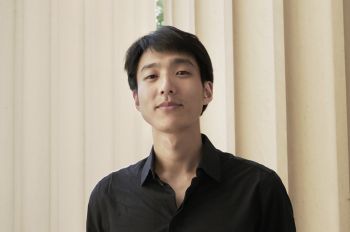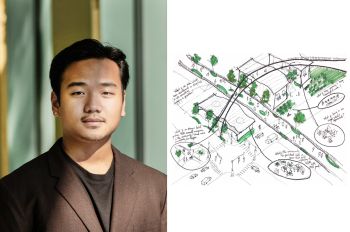Making the Tough Decisions

Heading into college as an undergraduate student, Anahita Dasgupta (M.DES. ’24) knew that she was interested in design. And she had an idea about how she could pursue that as a career.
It didn’t take long into her undergraduate career for Dasgupta to realize that a path that started with a mechanical engineering degree wasn’t the same as the design career she wanted to pursue.
“To be honest I didn’t think that design would be separate from engineering. In my head, they always felt like they would go hand in hand,” she says. “Once you design something, you need to be an engineer to make it. To design it, is to be intentional about the thought behind the thing in the first place. But, I quickly realized that learning about engineering is so different from learning about design, and they’re not as integrated as I anticipated them to be.”
While she realized that engineering wasn’t the path that she wanted to pursue as a career, Dasgupta credits her studies in it for opening her eyes to the possibilities that design could provide. In fact, she doesn’t believe that she would have wanted to pursue a graduate design education—and, more specifically, all that design offers—had she not studied engineering while also pursuing design extracurriculars. Because of the passion that her undergraduate experience ignited in her for design, she started to explore graduate programs in design that allowed for discovery, and the Institute of Design at Illinois Institute of Technology had what she was looking for.
ID allowed her to explore all that design offers and the flexibility to choose what she wanted to pursue. As she prepares to graduate from ID later this month, Dasgupta’s perspective on design has evolved significantly from where she first started.
“I just think I would be such a different designer if I didn’t come to ID. If I carried on my trajectory from undergrad, I don’t think I’d be close to where I am now without the network at ID that has been able to push me in the ways I wanted to be pushed,” Dasgupta says. “I feel like I grew up very STEM-oriented and I thought of myself as mainly a math and science person. But at ID, I got to grow more holistically and engage more with the social science and critical thinking parts of me. I feel like I’ve not only been able to blend my undergraduate and ID degrees to strengthen my design practice, but also expand how I think and approach my work, and also expand how I see myself.”
Across her two years at ID, Dasgupta has taken part in design workshops and projects on topics ranging from bra technology to food waste and explored design in health care and cars through internships with the Institute of Healthcare Delivery Design and Ford Motor Company. These diverse experiences helped Dasgupta understand how design can be applied in different realms.
“The faculty brings such different perspectives to design that working with them just pushes me to think in ways that I wouldn’t have thought of naturally,” she says. “They helped me see different ways to apply design, how to think about it, where we can or should challenge the norm or use the process more flexibly, as well as learning to be critical at the right moments.”
What she learned in the classroom and through projects and workshops was only enhanced by the community she built at ID, particularly those with other ID students.
The relationships and groups that they built because of shared interests, such as Dasgupta’s interest in equitable design, provided a sounding board of creativity and support.
“As much as the classroom starts the conversations, it’s really pushed forward by the friends you make at ID and the people you connect with who have the same values in design,” she says. “That’s something that’s never going to go away. ID stops at two years, but all the friends that I know that are aligned in the way that I think about design, they’re going to be friends for life now.”
As she looks forward, Dasgupta is preparing for her next challenge. She’s interviewing and pursuing full-time roles in design research and strategy.
“A lot of the ID courses have had really good conversations around power, authority, and decision-making, and those always felt like the toughest conversations in the design process,” she says. “Once you have the idea, executing on it is not the hard part. All of my most memorable and my favorite ID courses have all been heavily engaged in the decision-making part of the process.”
Her experience at ID helped her realize that design doesn’t have to focus on just one idea or practice. It can dive deeper and extend into making tough decisions before a product is developed. And she wants to be the person helping to make those decisions.




